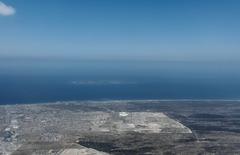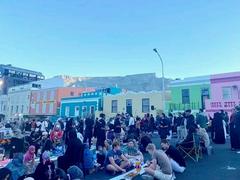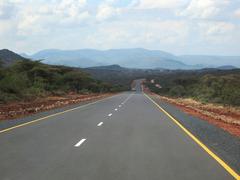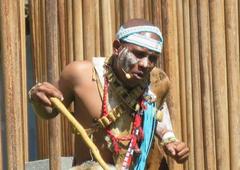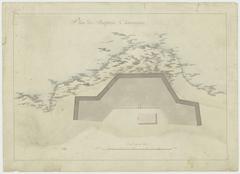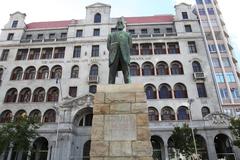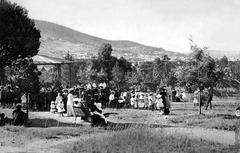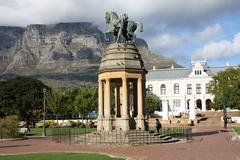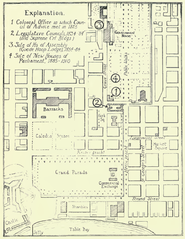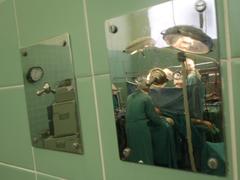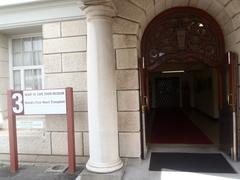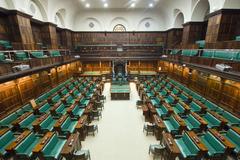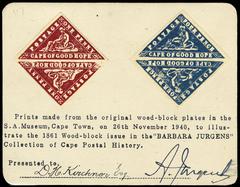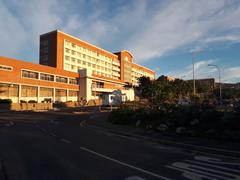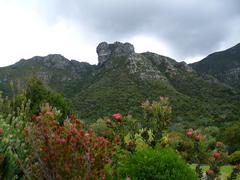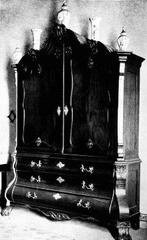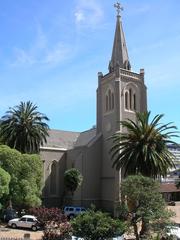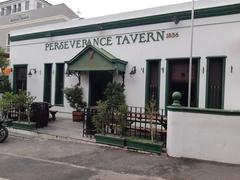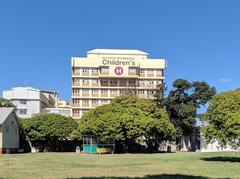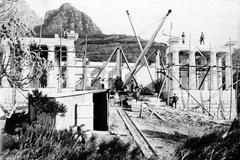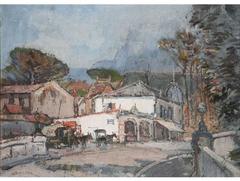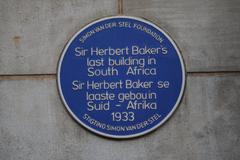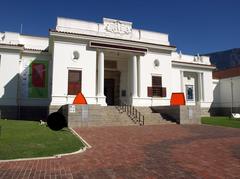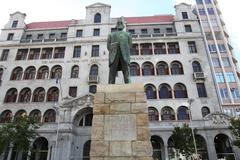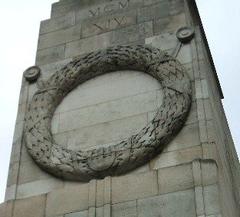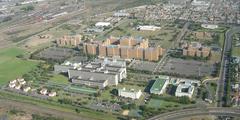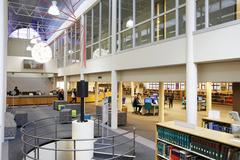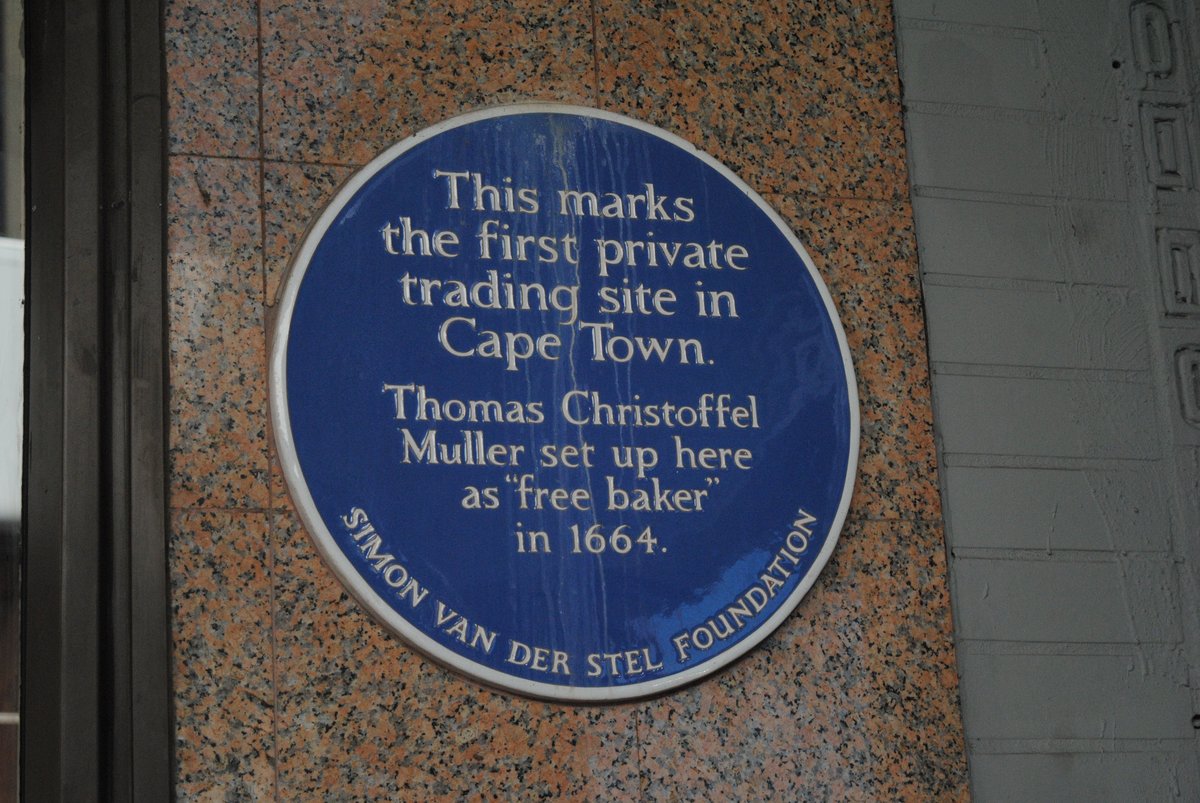
Cape Town First Trading Site: Visiting Hours, Tickets, and Historical Sites Guide
Date: 14/06/2025
Introduction
The First Trading Site in Cape Town stands as a pivotal landmark, marking the genesis of formal trade in South Africa and the southern tip of Africa. Established in 1652 by Jan van Riebeeck for the Dutch East India Company (VOC), it began as a refreshment station for ships traversing the Europe-Asia sea route. Long before European arrival, the Khoisan peoples—San and Khoikhoi—maintained sophisticated local trade networks. The site’s strategic position at Table Bay, beneath Table Mountain, made it an ideal crossroads for commerce and cultural exchange (South African Tourism; SA History).
As the settlement expanded, its fortifications, gardens, and storehouses evolved into Cape Town’s vibrant cityscape. Key colonial sites—such as the Castle of Good Hope and the Slave Lodge—reflect a complex legacy of economic development, cultural interaction, indigenous displacement, and the introduction of slavery (Britannica; South Africa Travel Blog; Nomadic Matt). Today, visitors can explore these sites and their enduring legacies, enjoying accessible visiting hours, guided tours, markets, and festivals that echo the area’s origins as a diverse meeting place (Cape Town Tourism; Travel Pander).
Table of Contents
- Indigenous Trade and Early Inhabitants
- European Exploration and Early Settlement
- Dutch East India Company and Establishment
- The Company’s Garden
- Interactions with the Khoisan
- Expansion and Fortification
- The Slave Lodge and the Settlement’s Growth
- Enduring Legacy of the Trading Site
- Key Historical Structures
- Visiting Hours, Tickets & Accessibility
- Practical Travel Tips
- Visuals and Media
- Frequently Asked Questions (FAQ)
- Responsible Tourism and Visitor Etiquette
- Summary and Conclusion
Indigenous Trade and Early Inhabitants
Before European contact, the Cape was home to the Khoisan: the San (hunter-gatherers) and Khoikhoi (pastoralists). These communities developed intricate trade networks, exchanging cattle, iron, and copper with neighboring Bantu-speaking groups. Their role as brokers between inland communities and, eventually, European newcomers, underscores the Cape’s significance as a crossroads for trade (South African Tourism).
European Exploration and Early Settlement
In 1488, Portuguese explorer Bartholomeu Dias rounded the Cape, naming it the “Cape of Storms.” While the Portuguese did not establish a settlement, the event marked the Cape as a crucial waypoint between Europe and Asia (Britannica).
Dutch East India Company and the Establishment of the First Trading Site
In 1652, Jan van Riebeeck and the VOC established a refreshment station at Table Bay, using the area’s fertile soil and fresh water sources to supply passing ships. Initial structures included a fort, gardens, and storehouses, forming the nucleus of Cape Town (South Africa Travel Blog; Britannica).
The Company’s Garden
Founded in the late 1650s, the Company’s Garden was central to the trading post’s operations, supplying fresh produce to VOC ships and settlers. Over time, it expanded to include orchards and vineyards, with the original storehouse (later Groote Schuur) becoming an important historical building (South African Tourism).
Interactions with the Khoisan
Early relations with the Khoisan were based on barter—cattle for European goods like tobacco and beads. However, as the settlement grew, competition for land and resources led to conflicts and the eventual displacement of indigenous communities. The VOC also imported enslaved people from East Africa, Madagascar, and Southeast Asia, contributing to the city’s multicultural fabric (Britannica).
Expansion and Fortification
The trading post’s prosperity led to the construction of the Castle of Good Hope (1666–1679), a star-shaped fortress and the oldest surviving colonial building in South Africa. The castle became the administrative and military center for the VOC and later colonial governments (South Africa Travel Blog).
The Slave Lodge and the Settlement’s Growth
The VOC built the Slave Lodge in 1679 to house enslaved laborers who powered the city’s growth. Today, the Lodge serves as a museum, documenting slavery’s impact on Cape Town’s development and its multicultural society, notably in the Bo-Kaap district (Nomadic Matt).
Enduring Legacy of the Trading Site
The trading site’s foundation set Cape Town on its trajectory as the “Mother City” of South Africa, attracting settlers, traders, and immigrants. Its legacy is visible in the city’s architecture, markets, and diverse population (South Africa Travel Blog).
Key Historical Structures
- Castle of Good Hope: Star-shaped fortress completed in 1679; South Africa’s oldest colonial building (South Africa Travel Blog).
- Company’s Garden: The original agricultural center, now a public park (South African Tourism).
- Slave Lodge: Built in 1679, now a museum exploring the history of slavery (Nomadic Matt).
- Groote Schuur: Originally a VOC storehouse, later a residence for political leaders (South African Tourism).
Visiting Hours, Tickets & Accessibility
Castle of Good Hope
- Hours: Daily, 9:00 AM – 4:30 PM
- Tickets: Adults ZAR 70; discounts for children/seniors. Castle of Good Hope website
- Accessibility: Wheelchair ramps and guided tours available.
Company’s Garden
- Hours: Daily, 8:00 AM – 6:00 PM
- Admission: Free
- Accessibility: Wheelchair-friendly paths.
Slave Lodge Museum
- Hours: Tue–Sun, 9:00 AM – 5:00 PM; closed Mondays
- Tickets: Adults ZAR 40; concessions available. Purchase online or at entrance.
- Accessibility: Wheelchair access and audio guides.
Groote Schuur
- Hours: By appointment only.
First Trading Site (Grand Parade Area)
- Hours: Open-air site; accessible year-round, 8:00 AM – 6:00 PM recommended.
- Tickets: Free; guided tours R100–R300 per person.
Practical Travel Tips
- Getting There: All sites are centrally located; accessible by foot, public transport, or taxi.
- Best Time to Visit: Weekday mornings or late afternoons for fewer crowds and optimal lighting (Travellers Worldwide).
- Safety: Secure belongings, stay in groups, and use official transport. Download the Namola Safety App.
- Accessibility: Most sites feature ramps and paved walkways. Contact tour providers for specific needs.
- Facilities: Nearby restrooms, cafés, and shops. Free Wi-Fi in city center areas.
Responsible Tourism and Visitor Etiquette
- Respect signage and heritage markers; do not disturb protected areas (SA History Online).
- Support local businesses and Fair Trade certified operators (Responsible Tourism Manual for South Africa).
- Conserve water and minimize waste; use public transport or walk (Cape Town Water Strategy).
- Be culturally sensitive, engage with local guides, and seek indigenous perspectives.
- For emergencies, dial 112. Seek help from uniformed tourism ambassadors.
Visuals and Media
Enhance your experience with virtual tours, interactive maps, and high-quality images of the Castle, Grand Parade, and Company’s Garden on the Cape Town Tourism website. Use the Audiala app for interactive audio guides. Example alt text: “First Trading Site heritage marker with Table Mountain backdrop.”
Frequently Asked Questions (FAQ)
Q: What are the First Trading Site visiting hours?
A: The open-air site is accessible year-round; guided tours run 9:00 AM – 5:00 PM.
Q: Are there entry fees?
A: The site is free; guided tours cost R100–R300 per person.
Q: Is the site wheelchair accessible?
A: Yes, with paved walkways and accessible facilities nearby.
Q: Can I take photographs?
A: Yes, but ask permission before photographing people.
Q: How do I book tours?
A: Book through local operators; advance booking recommended.
Additional Resources
For more, visit:
- Cape Town’s History Is a Story You Need to Know
- Cape Town
- Historical Sites in Cape Town, South Africa
- Cape Town Guide
- Establishment of the Cape and Its Impact
- Cape Town Is In What Country?
- Informal Trading Policy and Management Framework
- Cape Town Historical Sites
- Cape Town Visitor Centres
- 20 Places to Take First Timers to Cape Town
- Best Time to Visit Cape Town
- Responsible Tourism Manual for South Africa
Summary
The First Trading Site encapsulates centuries of trade, cultural exchange, and social transformation at the heart of Cape Town. From its origins as a 17th-century refreshment station to its current role as a dynamic urban space, the site is a living testament to indigenous resilience, colonial expansion, and multicultural heritage. Accessible, educational, and integrated with local markets and events, the site offers an engaging experience for all. Support local businesses, travel responsibly, and enrich your journey with guided tours and interactive resources. Your visit helps preserve this vital heritage for future generations (Cape Town Travel; WIEGO Informal Trading Policy).
Plan your visit today—download the Audiala app for immersive audio guides, follow us on social media for updates, and explore our in-depth guides to Cape Town’s heritage.

